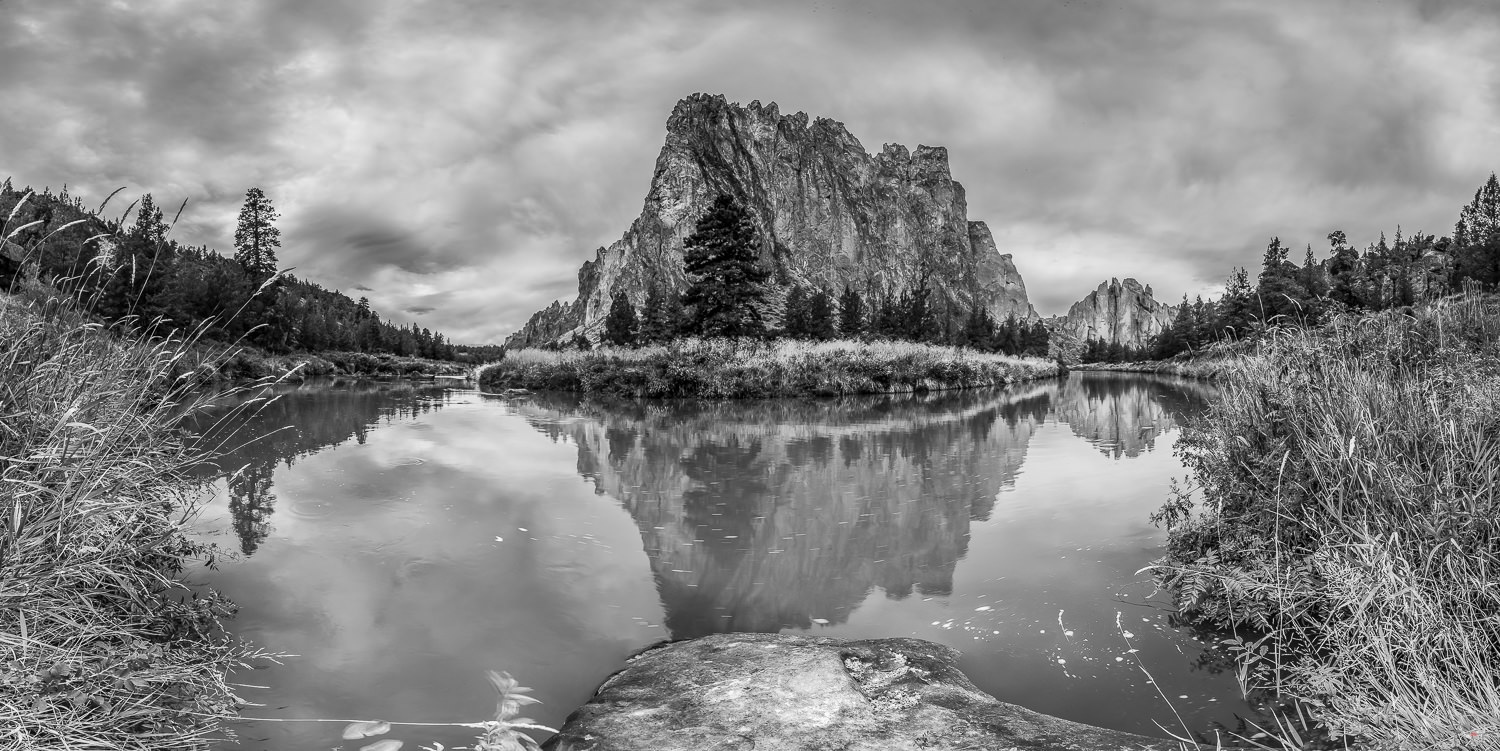This past weekend I participated in an advanced photography workshop with astro-photographer Brad Goldpaint. This was a companion to the two-part introductory workshop that I attended last month. Like that one, this one consisted of an evening/night shoot followed by a classroom processing session the following day. Unlike the introductory course, Brad planned the advanced session around a moonlit landscape.
We began our evening with a sunset shoot at Smith Rock State Park. Below are some selected highlights from the images I shot.
Once the sun went down, we moved to another location in the park with the intent to shoot moonlit landscapes and images that could be combined into star trails and/or time-lapse sequences. While the stormy weather earlier in the day proved fantastic for our sunset shoot, it proved problematic for astrophotography. The moon did rise later that evening, but was mostly hidden behind diffuse cloud cover. For the most part, the stars were completely hidden. The photo below shows the only recognizable stars in any of the images I shot.
The Big Dipper over Smith Rock State Park & the Crooked River.
Despite the cloud cover, the shoot was a success in terms of the process of capturing images for later use in time-lapse and star trail composite imagery. I also was able to capture the following multi-image panoramas.
The three images above show the effects of light pollution. The light on the rocks comes from the nearby towns of Redmond and Terrebonne (either directly or reflected from the clouds above). The clouds beyond are lit from the lights of the town of Madras. In the 18-image pano, the clouds on the left most portion are also lit from light pollution from Redmond and Terrebonne.
In this case, the light pollution has added something to images. That is not always the case. In astro photography, less is more when it comes to light pollution. My friend Scott Kardel is an astronomer who used to work at Palomar Observatory, but now works as the public affairs director for the International Dark-Sky Association. In the brief video below he demonstrates some of the negative effects of light pollution as well as an extremely simple way to combat it by using shielded (or dark sky friendly) light fixtures. As an architect, I already specify dark sky fixtures on all my projects, but anyone can retrofit their own home with such fixtures.
I had rented at 16-35mm wide angle zoom lens for the workshop and had to have it in the mail by the end of the day today. Since I still had some time with it, I went back out to Smith Rock to grab a few daytime photos. The results are below.
Overall, it was a fantastic weekend for photography both because of and in spite of the weather.





























